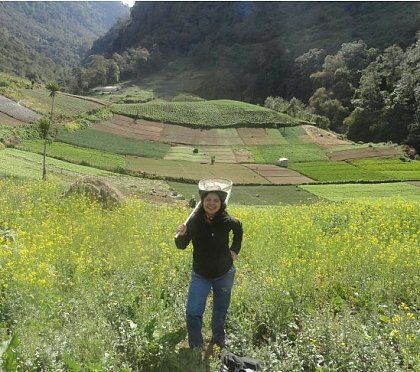Former ESCALATE PhD Students
(incomplete list)

Marija Milanovic
An integrated assessment of the effects of plant invasions on ecosystem services

Lukas Egli
Quantifying and modelling trends of ecosystem service diversity in socioecological systems and their
implications for resilience

Julian-Richard Massenberg
Identifying social values of ecosystem services: theoretical and empirical investigations

Julia Goss
Provision of the ecosystem service of pollination in a changing world: oilseed rape for food and fuel.

Lars Langer
Is there a biodiversity crisis in our brains too? Textmining historical and contemporary novels for the service role of biodiversity in communication
Email

Stephan Kambach
From biodiversity to traits to functions to services: application of the ecosystem service framework to Central European forests

Veronika Liebelt
A dynamic model of urban ecosystem services, residential mobility and real estate markets
Rita Radzeviit
Impacts of land management and agricultural practices on ecosystem service provision.

Ronny Richter
Ecosystem services assessment in a Central European floodplain forest: an ecosystem approach using reflective and thermal remote sensing data.

Patricia Landaverde-González
Biodiversity loss in Mesoamerica: investigating the impact of habitat fragmentation on bees.

Bartosz Bartkowski
Accounting for the Diversity Aspect in Economic Valuation of Biodiversity: Conceptual and Methodic Issues with Application

Christian Hoyer
Governance, land-use dynamics and their impacts on ecosystem services under climate change

Annett Hahn
Shift of trait compositions driven by biological invasions in context with land use and climate
